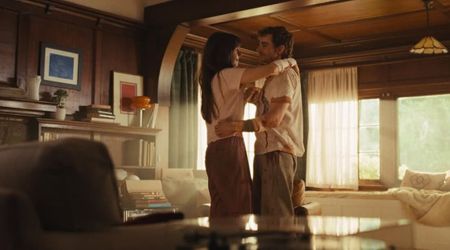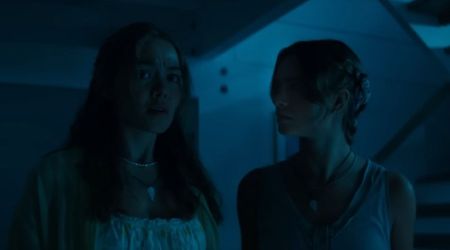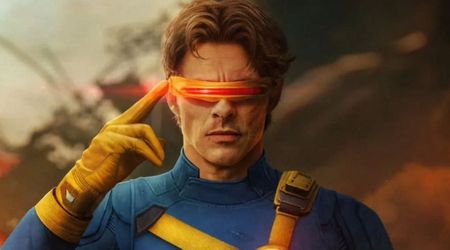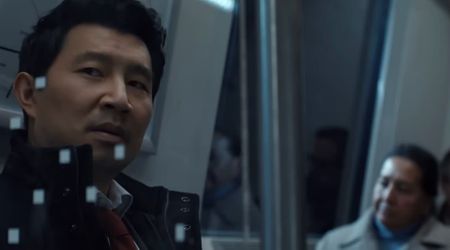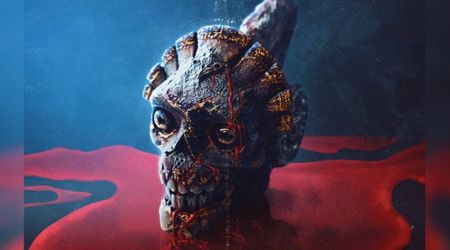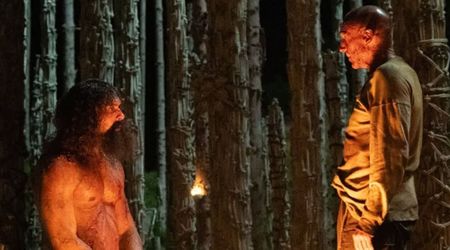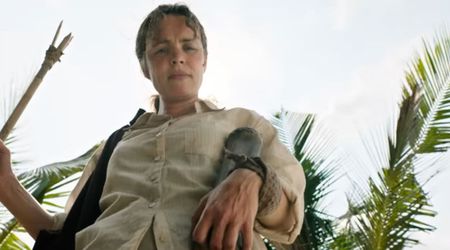The real story of Rodney King and the 24 hours that shook America to its core as Los Angeles burned

'Kings' is set to hit the screens on April 27 and chronicles the lives of a black family and their white neighbor in the backdrop of rising racial tensions in the city of Los Angeles following the acquittal of the four police officers involved in the beating of Rodney King in April 1992.
Acclaimed Turkish-French film director Deniz Gamze Ergüven, best known for her debut feature film, Mustang, is directing this film. The title was chosen in reference to two Kings who have proven to be inseparable from the fabric of the African-American community: Martin Luther King Jr. and Rodney King. Though in no way related, their roles in the tragedy that were the 1992 Los Angeles riots is undeniable - the former for his irrepressible vision to see blacks in the country gain equal footing and opportunity and the latter for inadvertently becoming the central point to the 24 hours that shook modern-day America to its very core.

'Kings' is Ergüven's first English film and narrates the tale of the riots like none other. Based on extensive research and detailed interviews with eye-witnesses, the film stars Halle Berry as Millie, a tough-as-nails single mother of eight who will go to any lengths to ensure her children see no harm and Daniel Craig as Obie, her neighbor-cum-love interest who has had his problems with alcohol.
The film is a one-of-a-kind in the sense that it focuses on numerous sides of the riot rather than just on one particular character's viewpoint, and lays bare the fragility of family relationships during testing times. As put succinctly by Variety, it is the first film where one can 'switch off the TV, step out the front door, and witness the craziness unfold in real time.
Despite the ambitious undertaking by Ergüven, 'Kings' has failed to impress critics, who have called it 'an unmediated jumble,' 'an unconvincing tonal patchwork,' and 'a baffling and frustrating disappointment.' The film's attempts to seemingly jump at random from scenes of emotional heaviness and melodrama to slapstick comedy often jar with its overall message of how relevant the riots are even in today's social and political climate and leave the viewer puzzled
A closer look at one of America's darkest hours requires for the clocks to turn back to the year 1992 - a time when rapid technological and scientific advances signaled a new era as the century winded down - as the country was set back by a grainy 12-minute long piece of footage that would ultimately lead to the deaths of 63, the injuries of another 2,383, and the arrests of over 12,000.
The 1992 riots came to be known by many names: the Rodney King riots, the South Central riots, the 1992 Los Angeles civil disturbance, and the 1992 Los Angeles civil unrest. But it's one name that feels more of a perfect fit than the others: the Battle of Los Angeles; because make no mistake, those six days of riots, looting, arson, murders, and civil disturbances was nothing lesser and resulted in property damages in the excess of $1 billion.
The unrest began on April 29 after a trial jury acquitted four officers of the Los Angeles Police Department for using excessive force during the arrest of Rodney King and escalated to the point where then-Governor Pete Wilson sent in the California Army National Guard, and President George H.W. Bush deployed the 7th Infantry Division and the 1st Marine Division to the state to help the beleaguered police and help calm tensions.
It all began on the evening of March 3, 1991. Rodney King and two other passengers are barreling down the west on the Foothill Freeway in the Lake View Terrace neighborhood of Los Angeles at 115 mph (185 km/h). When officers from the California Highway Patrol (CHP) attempt to stop King, he resists and continues speeding because he's intoxicated and he knows his actions constitute breaking the terms of his probation - he was granted parole for a robbery and had previous convictions for crimes such as assault and battery.
After his car is stopped and the two other passengers are placed in the patrol car, five white Los Angeles Police Department (LAPD) officers – Stacey Koon, Laurence Powell, Timothy Wind, Theodore Briseno, and Rolando Solano – surround King, taser him, strike him repeatedly with side-handled batons, and then finally tackle him to the ground before handcuffing him.
Unbeknownst to the officers, the entire incident is captured on film by local civilian George Holliday from his nearby apartment. The 12-minute tape would later become the primary evidence of the prosecution in the widely-publicized trial of the officers and serve as the powder keg that ignited the flames that would consume the city of Los Angeles for a week
Unsurprisingly, the footage became the talking point of media outlets around the country and a rallying point for activists and minorities who had long complained that the LAPD used excessive force and harassed them. A subsequent independent commission similarly concluded that 'a significant number of LAPD officers repeatedly use excessive force against public and persistently ignore written guidelines of the department regarding force.'
Four of the police officers involved in the beating were charged with assault and use of excessive force by the Los Angeles County District Attorney. Their defense stated that the officers believed King was under the influence of PCP - later proven false by a test - and 13 months after the beating, on April 29, 1992, the jury acquitted all four officers of assault and three of the four of using excessive force after seven days of deliberations.
There was always the feeling that the incident would be a recipe for disaster and a wide variety of factors - growing economic disparity, high rates of poverty and unemployment, a nationwide recession - would set up the perfect storm. Racial tensions in the country had been on the boil for a while, and with the release of the footage, the fuse had effectively been lit. It would slowly burn its way to the ticking time bomb as the trial of the officers commenced, detonating as the jury came to its much-derided verdict.
In expectation of a not-guilty verdict, the Los Angeles police chief had set aside $1 million for possible police overtime, but was ultimately left high and dry as two-thirds of the department's patrol captains were out of town for a three-day training seminar. The presiding judge also announced a two-hour buffering time between the jury reaching its verdict and the announcement so reporters, police, and emergency responders would be prepared for any possible outcome.
The unrest that was already visible in the 300-strong crowd which had gathered outside the courtroom in eager anticipation of the verdict turned into a full-blown riot following the officers' acquittal, peaking in intensity over the next two days. A dusk-to-dawn curfew and deployment of thousands of troops did little to placate the incensed African-American community as they took to the streets in a violent backlash against the decision.
The verdict was announced at 3:15 pm local time and all indicators suggested that the African-American community would not take too kindly to officers being let off, scot-free. To them, this was yet another example of a white man getting away with a crime that would see them punished, reaffirming a deep-seated notion that they were not an equal people.

At 4:58 pm, Mayor Tom Bradley expressed his anger about the verdict, stating that the people 'will not tolerate the savage beating of our citizens by a few renegade cops' but stressed for calm. But his speech would have the opposite of the desired effect. The riots would escalate.
The first seeds of the soon-to-be Battle for Los Angeles were sown at 71st and Normandie, where a dozen or so police officers roughly handled a well-known member of the black community as they took him into custody for hurling an object at their car. Their treatment of the youth, a minor, further agitated an already uneasy and growing crowd, who began taunting and berating the police. They were ordered to bid a hasty retreat from the neighborhood, lest things turn violent, emboldening the protestors to proceed south and block the intersection of Florence and Normandie.
As the evening proceeded, a group of young men then broke the windows of a local liquor store and looted the shop, while concurrently, a growing crowd began attacking motorists of Caucasian or Asian appearance by throwing debris at their cars and then pulling them out and beating them when they stopped.
The crowd of protestors that had gathered at the Los Angeles police headquarters at Parker Center was blocked from the building by the police, who had formed a skirmish line to protect the building. But that line was eventually broken at 9 pm, with the crowd making a nuisance of itself by heading to the civic center, attacking law enforcement, turning over vehicles, setting objects ablaze, and blocking traffic.
At Lake View Terrace, the neighborhood where Rodney King was beaten in 1991, 200-400 protestors gathered at around 9:15 pm and began throwing rocks, shooting into the air, and setting fires.
On the second day, the riots spread across the entirety of Los Angeles County: moving from South Central Los Angeles, going through the neighborhoods of Central Los Angeles before reaching Hollywood and then spreading to the cities of Inglewood, Hawthorne, Compton, and Long Beach.
One of the most infamous events of the second day was a much-publicized gun battle between the Korean store owners - who were forced to defend their own stores after police abandoned Korea town - and the protestors. While several white males were targeted in the black community's outpouring of rage, so were stores owned by Koreans, reflecting yet another facet of the tensions that engulfed the city during the time. The feeling was that the Korean-Americans were 'taking money out of their community' and that they were racist because they refused to hire blacks, and treated them without respect.
Equipped with M1 carbines, Ruger Mini-14s, pump-action shotguns, and handguns, stations broadcasted an altercation between the shopkeepers and armed looters, where the latter was forced to retreat after a rapid-fire battle.
A dusk-to-dawn curfew combined with the federalizing of the California Army National Guard through the invocation of the Insurrection Act, as well as the activation of an additional 10,000 Army National Guard troops, meant that slowly but surely, that the riots were brought under control over the next three days.

The five-day arson and looting resulted in the burning of 3,767 buildings and property damage estimated at more than a $1 billion. The fire department claimed at the zenith of the riot, they were getting calls every other minute. But the city slowly lumbered its way back to life, with citizens espousing equality for all and a message of togetherness.
Volunteers from all around the city got together to help clean while 13,000 police and military personnel patrolled the area and protected intact gas stations and food stores. Other businesses soon reopened their doors as well, though a majority of the local stores were never rebuilt because the owners found it difficult to procure loans.
Public pressure meant that federal charges of civil rights violations were brought against the police officers, and the verdict was set for around the first anniversary of their initial acquittal. The federal jury found Powell and Koon guilty but acquitted Briseno and Wind. Rodney King was awarded $3.8 million in damages and all four officers later either quit or were fired from the LAPD.
The message from the thousands who had taken to the streets during those five days was crystal clear: they would no longer tolerate the longstanding discriminatory and abusive treatment of the African-American community by law enforcement. They would no longer be second-class citizens.

